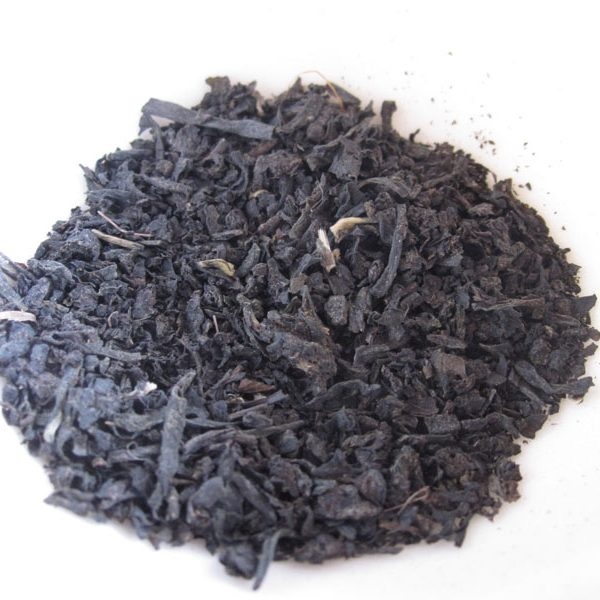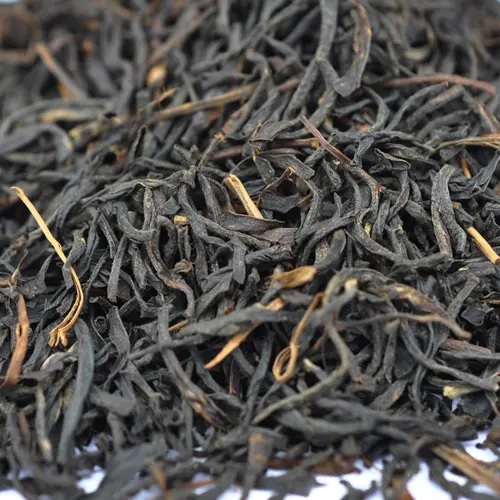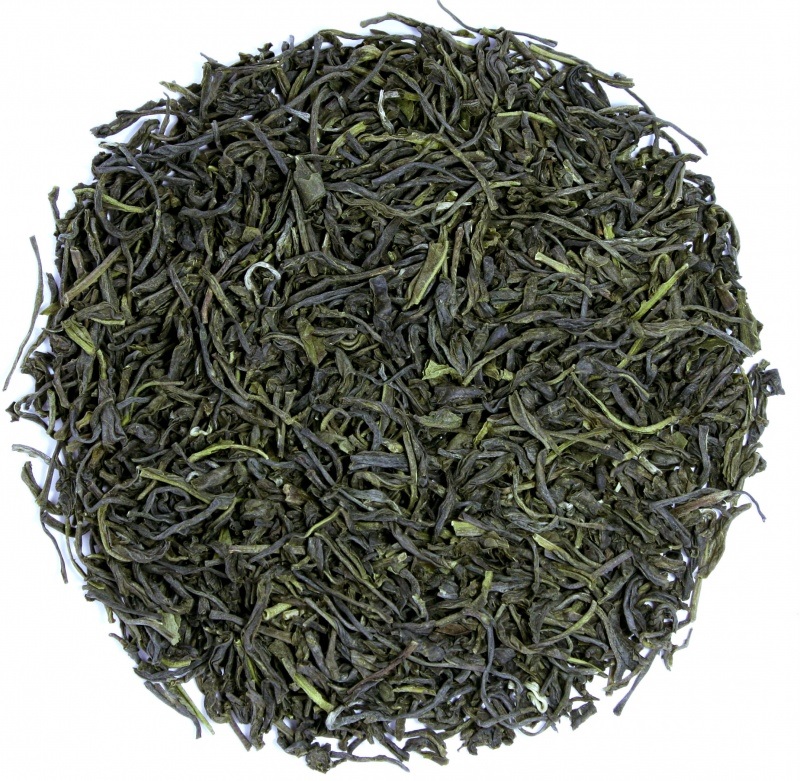Tea Processing
Kenpride exports Kenyan Orthodox tea grown on high elevation at the foot of Mount Kenya as well as on the highlands of Great Rift Valley region. The tea is directly sourced Smallholder farmer groups and hired labor companies. These tea origins produce specialty tea that is sought after for blending. The tea gardens (origin) are certified to Rainforest Alliance or Organic or both certifications. The types of tea are:.
We supply single origin straight lines – exporting tea in its original factory form from individually selected factories for the specialty quality tea.

Steps involved in orthodox tea manufacture: Majority of the processing steps are identical to that of CTC manufacture. The steps involved in orthodox tea manufacture include withering, preconditioning, rolling (roller or rotorvanes), roll-breaking and green leaf sifting, fermentation, drying, grading & sorting and finally packing.
Withering
Normally withering is carried out by spreading the leaves thinly on banks of trays or “tats” made of tightly stretched jute Hessian or wire-netting. The tats are kept 12 to 15 centimeters apart, to allow free access of air. There are two types of withering; open withering and closed withering. The open or “chung” type of withering accommodation admits of no control of rate of withering except by thickness of spread and the length of time of the withering phase. This is “natural withering” in its simplest form. The average length of time for withering is 18 to 20 hours where “tats” are used. In modern trough withering system 16-18 hours is the duration of wither with normal ambient air. In rainy season, to remove the surface moisture, heaters are used along with fans for two hours. Modern methods greatly reduce the withering time but they can also lower the quality of the final product by reducing the time for chemical withering. In general, south Indian tea manufacture is carried out with withered leaves having a moisture content of 60-65% for orthodox type of manufacture.
Rolling
When a satisfactory wither has been obtained the leaf is ready for rolling, which twists the leaf, breaks it up and expresses the juices (substrates and enzymes). The machines used vary in size and design but their principles are alike, they compress and turn the leaf over. This step facilitates mixing up of cell constituents viz., enzymes and substrate, thereby starting fermentation, while the maceration is complete in CTC, in orthodox only internal injury is imparted due to rolling. Enzymic oxidation of the catechins (polyphenols) begins at this stage.
Rotor Vane
The rolled leaves are fed into the rotor vane, which mixes the leaves thoroughly aiding in the cell maceration and extraction of the juice from the leaves.This step ensures proper coating of the leaf with the juice thereby facilitating subsequent processes viz., rolling and fermentation.
Roll breaking and green leaf sifting
These two steps are involved mainly for the orthodox type of manufacture. On discharge from the roller the leaf mass is more or less compressed into lumps. These are broken up in the sifting process by the machine which usually combines the operation of roll-breaker and sifter. The roll-breaker and green-leaf sifter in the first instance cools the leaf, secondly it aerates the mass, and thirdly by sieving out particles of small size it separates leaf into portions that will be reasonably uniform in their rate of fermentation.
Fermentation
Though actual fermentation starts at rolling it is continued in the next stage. The sifted leaves are spread out in thin layers on tables or perforated aluminum trays or into aluminum drums, in order to continue the oxidative process. During fermentation, the leaf changes colour and turns into a dark coppery tone. Typical aroma develops at this stage. The ideal conditions for fermentation are dhool temperature <30oC, moisture ~55%, pH 4.5 to 5.0 and relative humidity >90%. When the fermentation is judged to be sufficient (colour & nose assessment) the fermenting dhool is transferred to the drier. Googhie cum floor Drum fermentation is extensively used in south Indian tea Industry for orthodox type of tea manufacture.
Drying
Endless chain pressure driers as described in the CTC process are also commonly used in orthodox tea manufacturing. After firing, the tea is spread out to cool and then temporarily stored to wait sorting. Modern innovations on the drier are the hot-feed drier, where hot air is supplied separately to the feeder to arrest fermentation immediately as the dhool is fed, and the fluid-bed drier where the leaf moves from one end of the chamber to the other over a perforated plate in a liquid fashion.
Grading and sorting
Grading is carried out on mechanically oscillated sieves, similar to those used in the green leaf stage and fitted with meshes of appropriate size. Finished grades are stored in air-tight bins until a sufficient quantity has been accumulated to fill a consignment.
#2. Kenya's Purple Tea
Kenya is not only the home of the newest and most fascinating tea but is the only country all over the world currently producing the purple tea. The purple tea -clone TRFK 306, has been under development by Tea Research Institute for over 25 years and it was officially released for commercial production in July 2011. Purple tea contains anthocyanin (flavonoids) which imparts the purple color to tea leaves. Researchers have indicated that anthocyanins possess anti-inflammatory and anti-carcinogenic activity, cardiovascular disease prevention, obesity control, and diabetes alleviation properties, which are associated mostly with their potent antioxidant property. According to scientist Dr. Pradip Baruah, purple tea has high antioxidant whose effects “provide anticancer benefits, and improve vision, cholesterol and blood sugar metabolism.” Purple tea also has much lower caffeine content than black or green tea hence is much more beneficial in your beverage. Sweet and woodsy, purple tea has a stronger flavour than other traditional tea. Its taste is also influenced by its ability to be brewed at different temperatures and times.

#3. Kenya's Black Orthodox Tea
Kenyan Orthodox tea are grown on high elevation at the foot of Mount Kenya as well as highlands of Great Rift Valley region above 2200m. With a body and flavor similar to what an exceptionally full Ceylon might produce, Kenyan Orthodox tea brews beautifully and is extremely satisfying. The tea is brisky, has medium body with soft malt tones and a sweet, smooth finish. The liquor is a medium brown with reddish hints and has caffeine.
At the slope Mount Kenya and the highlands west of the Great Rift Valley, farmers tend their tea bushes that their families have nurtured for generation. Most of Kenyan farmers grow their tea on 1 – acre plots alongside the vegetables and maize on which they feed their families. This means that each small holding plot is carefully monitored and the individual best leaves are plucked the moment they are ready for harvest. As with wine, teas from different areas have their own unique tastes that can be enhanced by careful processing. Kenyan traditional orthodox lines are processed using skilled artisans.
After plucking in the cool morning dew, the farmer’s tea is delivered to nearby collection points where it is weighed and recorded. On receipt at the factory, the first stage in tea making is withering – green leaf is spread on long troughs with a gentle airflow to reduce its water content, and thus concentrate the tea flavor precursors. The withered leaf is rolled and curled using a traditional tea rolling table or a rotorvane, then a natural oxidation is commenced that utilizes the leafs enzymes to oxidize it’s green catechin polyphenols to produce theaflavin. It is the unusually high level of anti-oxidant theaflavin that gives tea its bright clear orange cup and its clean refreshing taste.
After oxidation the leaf is gentle air dried to arrest oxidation and to ensure that the tea has long shelf life whilst retaining its quality. Grading separates the bulky of tea into many individual tea grades, which with a unique style of leaf shape and liquor type. Tasting QC at the factory is the final link in the process chain from farmer to you the consumer. Skilled tasting ensures and guarantees that every tea is of an exceptional standard when it reaches consumer.

#4. Kenya's Green Orthodox Tea
While both green and black teas have their own distinctive tastes, Green tea is renowned for its health benefits owing to its processing method. Green tea’s processing avoids the fermentation process. As a result, green tea retains maximum amount of antioxidants and poly-phenols the substances that give green tea its many health benefits.
Green tea is one of the richest source of anti-oxidants – catechins which have been proven to have disease-fighting properties. Studies have shown that consuming green tea has an effect on reducing risk for several cancers. Additional benefits for regular consumers of green teas include a reduced risk for heart disease. The antioxidants in green, black, and oolong teas can help block the oxidation of bad cholesterol and improves artery function.
